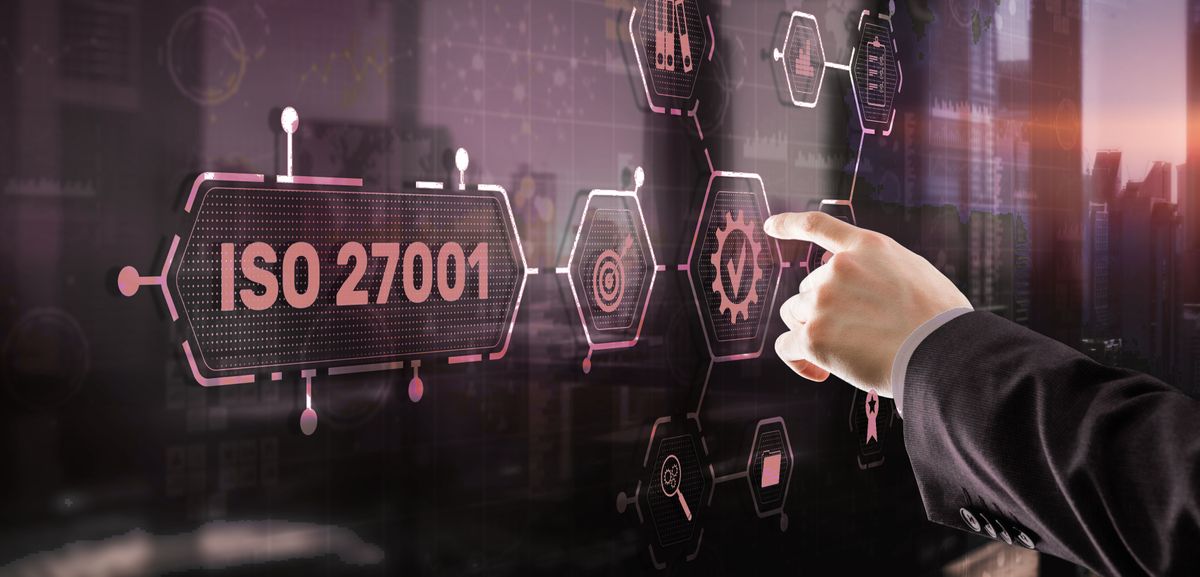11 Essential Steps to Achieve ISO 27001 Compliance for Your Business

Achieving ISO 27001 compliance can be a daunting task for any business. The standard is a comprehensive framework for information security management, covering policies, procedures, controls, and risk management. But don't worry, with the right approach and guidance, you can achieve compliance and reap the benefits of a robust information security management system.
Here are the 11 essential steps to achieve ISO 27001 compliance for your business:
Get Management and Stakeholder Buy-In
ISO 27001 is not just an IT issue - it's a company-wide concern. Therefore, a top-down approach is essential. Without the support of top management and all stakeholders, achieving compliance will be difficult, if not impossible. You need their backing to secure the necessary resources, including financial, workforce, and authority, to carry out the tasks required for compliance. Additionally, they must be actively involved and aware that this will require their and the company's full attention. So, it's crucial to communicate the benefits of compliance and the role that everyone must play in achieving it.
Define the Scope
When implementing an ISO 27001 information security management system (ISMS), defining the scope is a crucial step. This involves identifying the information assets that require protection, the processes and systems that handle them, and the boundaries of your ISMS. We highly recommend limiting the scope to ensure a manageable implementation, with the ability to expand it during the continual improvement phase to cover more areas of your organization. Failing to define the scope correctly can lead to wasted resources and effort. Therefore, it is one of the most important steps to take before starting any other implementation activity. It's worth noting that defining the scope in ISO 27001 differs from other standards, but we'll delve into that in a later article.
Perform a Risk Assessment
Performing a thorough risk assessment is the cornerstone of ISO 27001 compliance. This critical step helps you identify and prioritize potential risks to your information assets, assess the likelihood and impact of each risk, and determine the best ways to mitigate them. The assessed risks need to be mapped to the controls of ISO 27002 that you will implement, as well as any additional controls that you deem necessary. As you perform your risk assessment, make sure to include all assets within the defined scope, as well as any relevant company-wide risks. If your organization already has a risk register, it's essential to ensure that your risk assessment is compatible with it. Additionally, this is an excellent opportunity to create a Statement of Applicability (SoA), which outlines which ISO 27002 controls are applicable to your organization based on the identified risks. It's important to note that, in most cases, excluding more than three controls is not recommended.
Develop Policies and Procedures
ISO 27002 requires you to develop a set of policies and procedures that govern the security of your information assets. This includes policies for access control, data classification, incident management, and many other areas. You need to ensure that your policies and procedures are aligned with the requirements of the standard and are appropriate for your business.
Implement Controls
Once you have identified the risks and developed your policies and procedures, you need to implement controls to mitigate the risks. ISO 27002 provides a comprehensive list of controls that you can choose from, based on your risk assessment and business needs. You need to ensure that your controls are effective and efficient.
Train Employees
Your employees are a critical component of your information security management system. ISO 27001 compliance requires you to train your employees on the policies, procedures, and controls that govern the security of your information assets. You need to ensure that your employees are aware of their roles and responsibilities in maintaining the security of your information assets.
Perform Internal Audits
ISO 27001 compliance requires you to perform internal audits of your ISMS to ensure that it is effective, efficient, and compliant with the standard. You need to establish an internal audit program that covers all aspects of your ISMS and ensures that any non-conformities are identified and addressed.
Perform Management Reviews
ISO 27001 requires you to perform management reviews of your ISMS to ensure that it is aligned with your business objectives and remains effective over time. You need to establish a management review program that covers the performance of your ISMS, the results of internal audits, and any changes to the business environment.
Perform Corrective Actions
ISO 27001 requires you to perform corrective actions to address any non-conformities that are identified during internal audits or management reviews. You need to develop a corrective action plan that ensures that any non-conformities are addressed in a timely and effective manner.
Perform Certification Audit and achive Certification
The next step is to undergo a certification audit conducted by an accredited certification body. The audit will assess the effectiveness and compliance of your ISMS with the standard's requirements. It's crucial to ensure that you're adequately prepared for the audit and that your ISMS is ready for it. Once the audit is conducted, and no major non-conformities are detected, your certification body will issue a certificate of compliance for ISO 27001. This certificate demonstrates that your organization has successfully implemented an effective information security management system and complied with the standard's requirements. It's worth noting that the certification is valid for three years and requires annual surveillance audits to maintain compliance.
How to Get ISO 27001 Certified? Navigating the ISO 27001 Certification ProcessLearn how to navigate the ISO 27001 certification process and prepare for the required audits with our informative guide. Discover the different Audits involved, timeline expectations, and the ultimate checklist for a successful certification.
Everything you always wanted to know about ISO 27001 Stage 1 & 2, surveillance & recertification audits and how long your audit will take 📈 Prepare with our ultimate checklist to download! Continual Improvement
Achieving ISO 27001 compliance is not a one-time effort, but an ongoing process of improvement. Once your ISMS is up and running, it is important to establish a continual improvement program to ensure that your security posture remains effective and up-to-date. This program should include regular reviews of the ISMS to evaluate its effectiveness and to ensure that it continues to meet the evolving needs of your organization. It is also necessary to plan improvements to existing controls, the scope, or other areas as necessary. As part of your continual improvement efforts, it is important to stay up-to-date with changes to the ISO 27001 standard and best practices in information security. This will help you to identify new risks and to implement new controls to mitigate them.
All 11 Steps to Achieve ISO 27001 at a Glance
- Get Management and Stakeholder Buy-In
- Define the Scope
- Perform a Risk Assessment
- Develop Policies and Procedures
- Implement Controls
- Train Employees
- Perform Internal Audits
- Perform Management Reviews
- Perform Corrective Actions
- Perform Certification Audit and achieve Certification
- Continual Improvement

